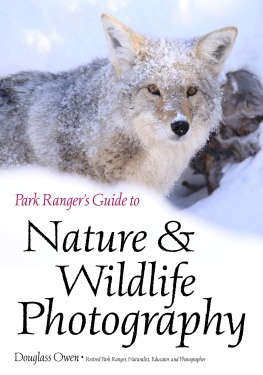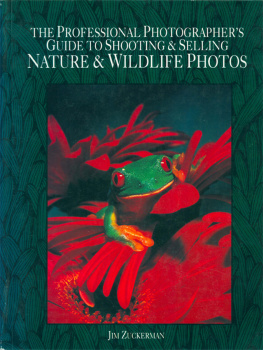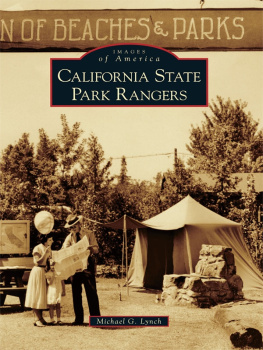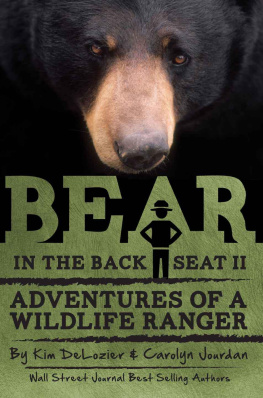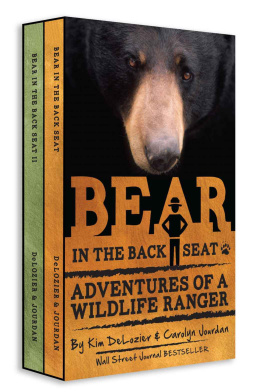

Dedication and Acknowledgment
This guide is dedicated to my son, Ben, and his appreciation and respect for nature, and to everyone who loves and values the natural world and wants to share it through photography. It is also dedicated to my son, Joshua, who was a budding artist before being struck down by MS. May this guide inspire others to develop their artistic talents.
A special thanks goes to Dave Clark, who provided a thorough and helpful review of the early manuscript of this guide. The work of Eliot Porter was my inspiration to get into nature photography back in the 1960s.
Copyright 2019 by Douglass Owen.
All photographs by the author unless otherwise noted.
Published by:
Amherst Media, Inc., P.O. Box 538, Buffalo, N.Y. 14213
www.AmherstMedia.com
Publisher: Craig Alesse
Senior Editor/Production Manager: Michelle Perkins
Editors: Barbara A. Lynch-Johnt, Beth Alesse
Acquisitions Editor: Harvey Goldstein
Associate Publisher: Katie Kiss
Editorial Assistance from: Carey A. Miller, Rebecca Rudell, Jen Sexton-Riley
Business Manager: Sarah Loder Marketing Associate: Tonya Flickinger
ISBN-13: 978-1-68203-328-1
Library of Congress Control Number: 2018953358
Printed in The United States of America.
10 9 8 7 6 5 4 3 2 1
No part of this publication may be reproduced, stored, or transmitted in any form or by any means, electronic, mechanical, photocopied, recorded or otherwise, without prior written consent from the publisher.
Notice of Disclaimer: The information contained in this book is based on the authors experience and opinions. The author and publisher will not be held liable for the use or misuse of the information in this book.

www.facebook.com/AmherstMediaInc
www.youtube.com/AmherstMedia
www.twitter.com/AmherstMedia
AUTHOR A BOOK WITH AMHERST MEDIA!
Are you an accomplished photographer with devoted fans? Consider authoring a book with us and share your quality images and wisdom with your fans. Its a great way to build your business and brand through a high-quality, full-color printed book sold worldwide. Our experienced team makes it easy and rewarding for each book soldno cost to you. E-mail today!
Contents

This pika picture has been in the regional phone company calendar, in Park Science magazine, and on the back cover of Defenders of Wildlife magazine as an honorable mention photo contest winner. It is a good photo because it tells a storythe story of how pika survive by harvesting plants to dry as hay to live off of in winter.
About the Author and This Guide
Douglass Owen was a public-school teacher for eight years, then a USGS geologist for sixteen years before joining the National Park Service. He worked as a park ranger for nineteen years at Craters of the Moon (CRMO) in Idaho before retiring. He became interested in photography at an early age, and by high school was developing his own film and printing his own pictures. Doug received a certificate of graduation in professional photography from the New York Institute of Photography in 1984. His first nature photography article was published in 1990. His pictures have been published in a number of calendars, magazines, and books. He taught numerous two-day nature photography workshops and seminars for the park while working at Craters of the Moon, and now does them as a park volunteer and board member of the CRMO Natural History Association. He has also done nature photography programs for Xanterra in Yellowstone and ISU Friends of Learning.
Doug believes in keeping it simple, and that the best gear is the gear that you are likely to carry with you. Knowing how to use your camera kit well, doing good research on your nature subjects, and using naturalist skills and field craft are far more important than owning the most expensive professional gear. This guide teaches you about naturalist skills and field craft that will enable you to get great wildlife shots with modest gear. It presents many simple techniques that you can employ to take your nature photography to a higher level.
Keeping it simple forces you to be more creative, because the less gear you have, the more you think about composition and crafting the shot rather than the technology. Keeping it simple also means getting it right in camera, rather than trying to fix it later in post-processing, and this guide teaches you how to get it right in the camera. Nature photography is a journey filled with amazing experiences, whether you take any pictures during an outing or not. This guide contains techniques, practices, and philosophy that Doug has learned and adopted over the years and found to be very helpful. He shares these with you, so that you can take better nature and wildlife photographs and enjoy the journey more.

Doug with his Saint Bernard puppy, Q-Bear, in 2007 at Craters of the Moon.
INTRODUCTION
Six Paramount Tips
In the course of this book, Ill be sharing over two hundred tips and techniques that will help improve your nature photography. Before we get into detail, however, there are six objectives to keep in mind. Well explore all of these in subsequent chapters.
1. Do No Harm
Let care and love for what you photograph come before getting the shot.


Whether its mountain goats at 14,000 feet or a squirrel that might be in your backyard, protect the animals and their habitats.
Our life is frittered away by detail simplify, simplify.
Henry David Thoreau

All of the wildlife images in this book were photographed with simple equipment This is a polar bear sow with her cub.
2. Keep It Simple
The less gear you have, the more you think about composition and crafting the shot, and not the technology. The images in this guide were taken using modest gear supported on a monopod, beanbag, or with the camera hand-held.
3. Get It Right in the Camera
Never say, Ill fix it in the computer later! With the skills youll learn in this book, youll be poised to get it rightright in the camera.
4. Take Advantage of Photo Opportunities When They Happen
Dont be too goal oriented. Take advantage of serendipityyou never know when, or if, an opportunity will ever come again.
Heres an example. Though this white-tailed jack rabbit (following page, bottom) was only ten feet from a boardwalk in a Yellowstone Park thermal area, most other visitors didnt see it. They were too goal orientedthey were fixated on going to see a hot spring and not watching for what else might be present. Its a good idea to take note of what other photographers are doing; this can clue you in to an animals presence or other photographic opportunities. Likewise, be sure to pay it forward by helping others when you can.
Next page
